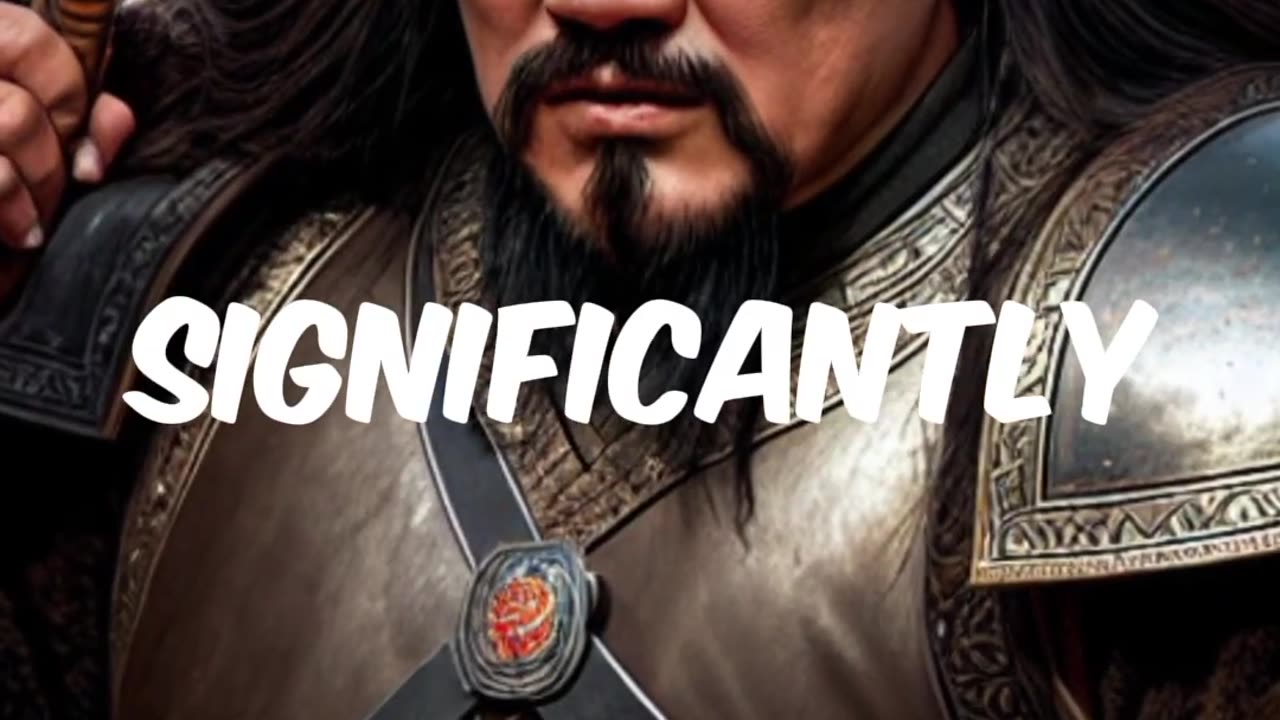Premium Only Content

How Genghis khan daughter made him beast of the East 😱 #history
This is informative shorts about history big king Genghis khan who had the great empire in his time 🕰️ .
#rumble #history #genghiskhan #Genghiskhanfacts #facts #historyfacts #viral #trending #trend #historytrend #viralvideo #informativevideo
Genghis Khan (born Temüjin; c. 1162 – 25 August 1227), also known as Chinggis Khan,[a] was the founder and first khagan of the Mongol Empire, which later became the largest contiguous land empire in history. After having spent the majority of his life uniting the various Mongol tribes, he launched a series of military campaigns, conquering large parts of China and Central Asia.
Genghis Khan
Portrayal of Genghis Khan in a 14th-century Yuan-era album, originally painted in 1278 (National Palace Museum, Taipei)
Khagan of the Mongol Empire
Reign
Spring 1206 – 25 August 1227
Successor
Tolui (as regent)
Ögedei Khan
Born
Temüjin
c. 1162
Khentii Mountains
Died
25 August 1227 (aged 64–65)[1]
Xingqing, Western Xia
Burial
Unknown
Spouse
Börte
Khulan Khatun
Yesugen Khatun
Yesulun Khatun
Ibaqa Khatun
Möge Khatun
Issue
Jochi
Chagatai
Ögedei
Alakhai Bekhi
Tolui
others
Names
Mongol script: ᠴᠢᠩᠭᠢᠰ ᠬᠠᠭᠠᠨ Chinggis Khagan
see § Name and title
Posthumous name
Emperor Fatian Qiyun Shengwu (法天啟運聖武皇帝)
Temple name
Taizu (太祖)
Dynasty
Borjigin
Father
Yesügei
Mother
Hoelun
Religion
Tengrism
Born between 1155 and 1167 and given the name Temüjin, he was the oldest child of Yesugei, a Mongol chieftain of the Borjigin clan, and his wife Hoelun of the Olkhonud clan. Yesugei died when Temüjin was eight, and his family was abandoned by their tribe in the Mongol steppe. Temüjin gradually built up a small following and allied with Jamukha and Toghrul, two other Mongol chieftains, in campaigns against other Mongol tribes. Due to the erratic nature of the sources, this period of Temüjin's life is uncertain; he may have spent this time as a servant of the Jin dynasty. The alliances with Jamukha and Toghrul failed completely in the early 13th century, but Temüjin was able to defeat both individuals and claim sole rulership over the Mongol tribes. He formally adopted the title "Genghis Khan" at a kurultai in 1206.
With the tribes fully united, Genghis set out on a campaign of conquest. Having vassalised the Western Xia state by 1211, he then invaded the Jin dynasty in northern China, forcing the Jin emperor Xuanzong to abandon the northern half of his realm in 1214. In 1218, Qara Khitai, a Central Asian khanate, was annexed by Mongol forces, allowing Genghis to lead an invasion of the neighbouring Khwarazmian Empire in the following year. The invading Mongols toppled the Khwarazmian state and devastated the regions of Transoxiana and Khorasan, while another expedition penetrated as far as Georgia and Kievan Rus'. In 1227, Genghis died while besieging the rebellious Western Xia; his third son and heir Ögedei succeeded him to the throne two years later.
The Mongol military campaigns begun by Genghis saw widespread destruction and millions of deaths across Asia and Eastern Europe. The Mongol army that he built was renowned for flexibility, discipline, and organisation, while his empire established itself upon meritocratic principles. He is revered and honoured in present-day Mongolia as a symbol of national identity and a central figure of Mongolian culture.
-
 LIVE
LIVE
LFA TV
13 hours agoLFA TV ALL DAY STREAM - FRIDAY 8/1/25
7,209 watching -
 LIVE
LIVE
The Bubba Army
23 hours agoHulk Hogan had Leukemia? - Bubba the Love Sponge® Show | 8/01/25
2,171 watching -
 18:36
18:36
DeVory Darkins
8 hours ago $3.55 earnedTrump scores MAJOR WIN with Americas youth as Biden drops HORRIBLE speech
8.44K27 -
 14:13
14:13
Clickbait Wasteland
14 hours ago $4.28 earnedAsking New Yorkers Who they Support for Mayor: Harlem
29.9K27 -
 19:55
19:55
The Rad Factory
16 hours ago $1.33 earnedCan I Fix My Fire Damaged F1 Car?
12.8K2 -
 1:26:22
1:26:22
Dialogue works
2 days ago $0.36 earnedScott Ritter: Russia Just DEFIED the U.S.: We'll End the War on OUR Terms!
3.35K10 -
 2:00:40
2:00:40
BEK TV
1 day agoTrent Loos in the Morning - 8/01/2025
13.5K1 -
 13:08
13:08
Dad Saves America
14 hours ago $1.53 earnedTeachers Unions Play Politics While Students Lag Behind - Poisoning of the American Mind: Pt 4
18K14 -
 20:05
20:05
Preston Stewart
14 hours ago $2.27 earnedCrimea Raid to Chasiv Yar Fight
20K9 -
 8:11
8:11
Millionaire Mentor
16 hours agoTulsi Gabbard and Leavitt DOUBLE-TEAM Kaitlan Collins in FIERY Exchange
16.1K7